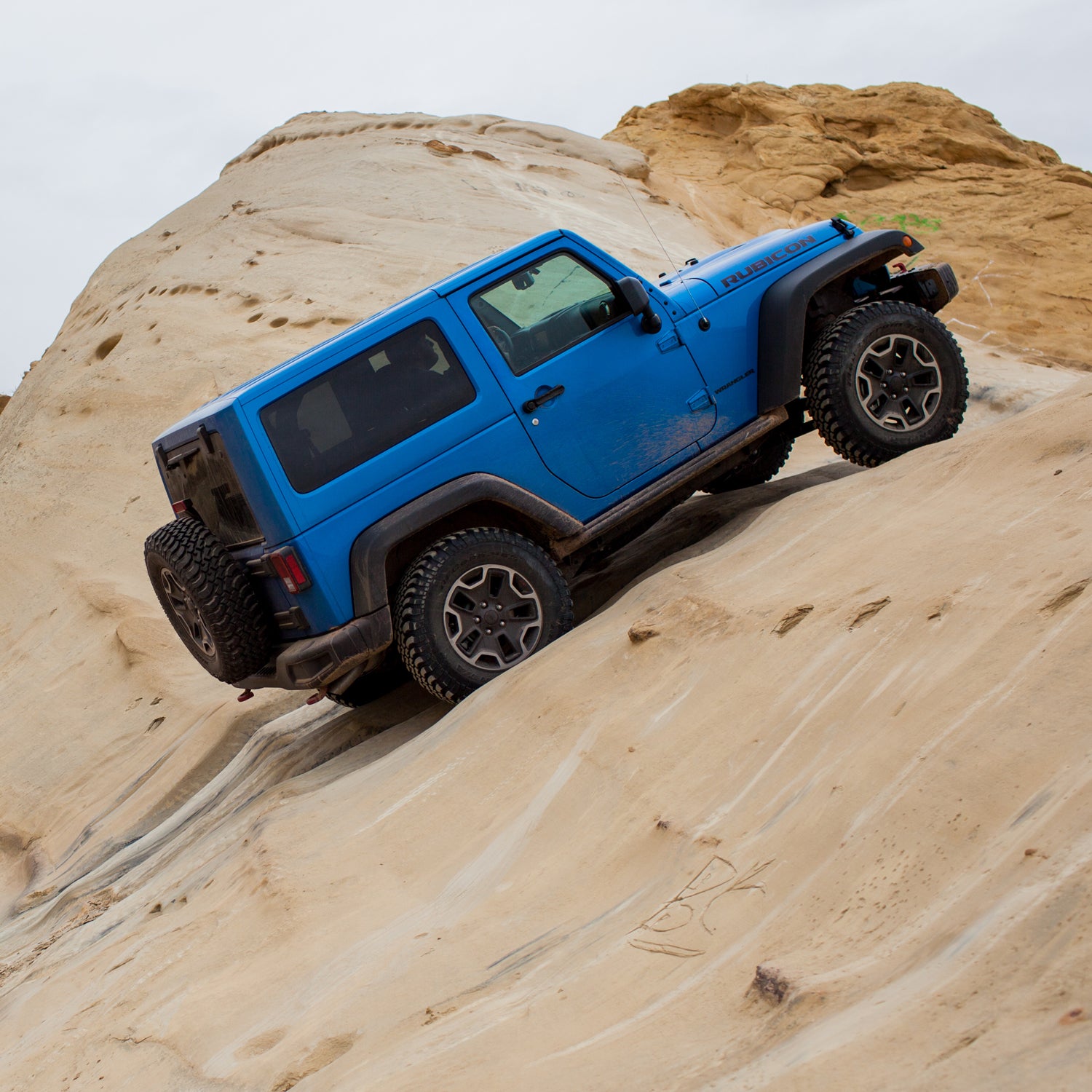If you like to play outside,聽you should probably drive a car with either 4WD or AWD.聽But here鈥檚 the question: How to choose between the two? To help you understand the advantages of each, we鈥檝e broken down the technologies and explained where they excel.
4WD
Pros: This is the simplest system聽and it鈥檚 been around more for than 125 years. In most vehicles, drivers can turn 4WD on and off, locking the front axle to the drivetrain to spin all four wheels simultaneously. Historically, 4WD comes with a lower set of gears (4-Wheel Low) that allow the vehicle to muscle up and over most anything. This feature has made 4WD the go-to choice for serious off-roaders for decades.
Cons: When 4WD is engaged, a vehicle will behave differently since there鈥檚 now power going to the front wheels鈥攁nd it slurps聽down more fuel. 4WD is usually limited to trucks and big SUVs.
Best for: True off-roading, mud, deep snow, sand, rock-crawling (like those Jeeps you see in Moab).
What is part-time 4WD?
Most trucks employ part-time 4WD so the vehicle can stay in fuel-saving 2WD mode. This also makes the truck easier to steer since there鈥檚 no torque going to the front wheels. You'll see this in pretty聽much any 4×4 pickup truck,聽such as the Toyota Tacoma and Ford F-150, the truck-based Chevy Tahoe, and the Jeep Wrangler.
What is full-time 4WD?
There are many similarities between full-time 4WD and AWD:聽both power the front and rear axles all the time. However, many full-time 4WD vehicles still give drivers the option of a 4-Wheel Low range of gears to enable the driver to have more control. And if you need to haul a trailer all the time, it provides more pulling power since torque is driving the grip on all four tires, not just two.聽You'll see it in Land Rovers and Range Rovers
What is a locking rear聽differential?
In a 4WD car, power travels from the engine to the transmission to the driveshaft through the rear differential to the聽rear聽axle. Locking it, either manually or automatically, depending on the vehicle, turns both wheels on the rear axle simultaneously at the same speed. This technique is used to overcome diverse terrain challenges鈥攖hink one wheel stuck in mud or sand or deep snow while the other is on firmer dirt, rock, etc.聽However, not all 4WD systems feature this capability. Most have a limited slip differential system which senses which wheel is turning the slowest and sends power to it.聽The system assumes that the slower moving wheel is the one with traction (as opposed to the spinning one which doesn't).聽
What is a center locking differential? 聽
Instead of just locking the rear axle, a center diff locks all four wheels together in unison.
AWD
Pros: AWD allows normal cars (instead of just trucks and SUVs) to travel more confidently through and over snow, ice, gravel, and packed dirt, and it doesn鈥檛 force the driver to do any thinking. Many AWD systems automatically route power between axles and modulate the power to individual wheels to ensure the best traction possible. As these systems have become more sophisticated, they鈥檝e lessened the fuel-economy penalty that was often present in 4WD vehicles. Some will even let you manually lock the differential so that power flows to both axles, no matter what鈥攁 sort of soft 4WD feature.
Cons: Few cars and SUVs that say they have AWD are actually in AWD when on the road. Instead they stay in front-wheel-drive the vast majority of the time to save fuel and only switch to AWD when the car鈥檚 computers sense the vehicle losing traction. And most AWD cars lack four-wheel-low gearing鈥攖he secret sauce behind a vehicle鈥檚 rock-crawling ability.
Best for: Daily drivers who want a vehicle that drives well on the freeway but also does just fine in the snow and on normal dirt roads.
What is full-time AWD?
Unlike the AWD vehicles that only kick the system in when you need it, full-time AWD vehicles are always sending power to all the wheels and monitoring which ones might need a little boost for better traction over variable terrain.聽As seen in聽AWD Subarus.聽


